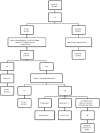Nocturnal enuresis: A topic review and institution experience
- PMID: 25506580
- PMCID: PMC4251068
- DOI: 10.4103/2231-0770.140641
Nocturnal enuresis: A topic review and institution experience
Abstract
The objective is to provide a review of nocturnal enuresis (NE), including its epidemiology, etiology, pathophysiology, evaluation, and current management. We also set to provide further insight on the treatment of this condition from the experience derived from patients cared for at our tertiary-care institution. NE affects approximately 15% of all children at 5-year-old, affecting boys more frequently than girls. At our large university tertiary pediatric urology center, NE and incontinence, in general, is one the most common chief complaints prompting urologic care. In this review, we examine the condition in detail, highlighting specific goals of the initial evaluation and treatment. We contrast the commonly implemented treatment recommendations, available from the literature with strategies we have found valuable from our extensive experience in treating patients with this disorder. Using current urologic reference textbooks, book chapters, Medline, journal articles and reviews describing the many aspects of NE were reviewed in order to describe NE and the current practices at our institution. Although, this is not a systematic literature review, it includes relevant available research, institutional experience and urological expert opinion and current practices at a tertiary state health facility. The treatment of NE remains a challenge for many pediatricians and pediatric urologists. This likely stems from the multiple possible etiologies of the disorder. We have established a treatment algorithm at our institution, which we have found successful in the majority of our patients. This consists of starting patients on urotherapy, then offering both the enuresis alarm device and medication therapy as first line treatments, and finally adding anticholingerics for combination therapy. Our hope is with further research the treatment of NE will continue to improve.
Keywords: Bedwetting; desmopressin; dysfunctional voiding; nocturnal enuresis; nocturnal polyuria.
Conflict of interest statement
Figures



Similar articles
-
Nocturnal Enuresis in India: Are We Diagnosing and Managing Correctly?Indian J Nephrol. 2017 Nov-Dec;27(6):417-426. doi: 10.4103/ijn.IJN_288_16. Indian J Nephrol. 2017. PMID: 29217876 Free PMC article. Review.
-
[Nocturnal enuresis in children--how to diagnose, how to treat?].Wiad Lek. 2013;66(1):35-44. Wiad Lek. 2013. PMID: 23905426 Review. Polish.
-
Primary and Secondary Enuresis: Pathophysiology, Diagnosis, and Treatment.Eur Urol Focus. 2017 Apr;3(2-3):198-206. doi: 10.1016/j.euf.2017.08.010. Epub 2017 Sep 6. Eur Urol Focus. 2017. PMID: 28888814 Review.
-
Management of nocturnal enuresis in Taiwan: Consensus statements of the Taiwan enuresis expert committee.J Formos Med Assoc. 2019 Jun;118(6):965-972. doi: 10.1016/j.jfma.2018.04.014. Epub 2018 May 18. J Formos Med Assoc. 2019. PMID: 29779924 Review.
-
Identifying Targets for Innovation in Amazon Reviews of Bedwetting Alarms: Thematic Analysis.Interact J Med Res. 2023 Jul 6;12:e43194. doi: 10.2196/43194. Interact J Med Res. 2023. PMID: 37410523 Free PMC article.
Cited by
-
Comparative response of Desmopressin versus Combination Therapy (Desmopressin + Oxybutynin) in Children with Nocturnal Enuresis.Pak J Med Sci. 2020 Sep-Oct;36(6):1263-1269. doi: 10.12669/pjms.36.6.1957. Pak J Med Sci. 2020. PMID: 32968391 Free PMC article.
-
Desmopressin plus anticholinergic agent in the treatment of nocturnal enuresis: A meta-analysis.Exp Ther Med. 2017 Oct;14(4):2875-2884. doi: 10.3892/etm.2017.4897. Epub 2017 Aug 7. Exp Ther Med. 2017. PMID: 28966673 Free PMC article.
-
Parental perception of nocturnal enuresis in a local region of Saudi Arabia.J Med Life. 2024 Jan;17(1):73-80. doi: 10.25122/jml-2023-0423. J Med Life. 2024. PMID: 38737650 Free PMC article.
-
Enuresis Nocturna in children with asthma: prevalence and associated risk factors.Ital J Pediatr. 2016 Jun 10;42(1):59. doi: 10.1186/s13052-016-0266-3. Ital J Pediatr. 2016. PMID: 27287763 Free PMC article.
-
The Clinical Features and Predictive Factors of Nocturnal Enuresis in Adult Women.Front Med (Lausanne). 2022 Jan 17;8:744214. doi: 10.3389/fmed.2021.744214. eCollection 2021. Front Med (Lausanne). 2022. PMID: 35111771 Free PMC article.
References
-
- Austin PF, Bauer SB, Bower W, Chase J, Franco I, Hoebeke P, et al. The Standardization of Terminology of Lower Urinary Tract Function in Children and Adolescents: Update Report from the Standardization Committee of the International Children′s Continence Society. J Urol. 2014 - PubMed
-
- Nevéus T, von Gontard A, Hoebeke P, Hjälmås K, Bauer S, Bower W, et al. The standardization of terminology of lower urinary tract function in children and adolescents: Report from the Standardisation Committee of the International Children′s Continence Society. J Urol. 2006;176:314–24. - PubMed
-
- von Gontard A, Mauer-Mucke K, Plück J, Berner W, Lehmkuhl G. Clinical behavioral problems in day-and night-wetting children. Pediatr Nephrol. 1999;13:662–7. - PubMed
-
- Robson WL, Leung AK. Secondary nocturnal enuresis. Clin Pediatr (Phila) 2000;39:379–85. - PubMed
-
- Ropper AH, Samuels MA. 9th ed. Ch 19. New York: McGraw-Hill; 2009. [Last accessed on 2014 April 08]. Sleep and Its Abnormalities Adams and Victor's Principles of Neurology. Available from: http://wwwaccessmedicinemhmedicalcom/contentaspx?bookid=354 and Sectioni... .
Publication types
LinkOut - more resources
Full Text Sources
Other Literature Sources

